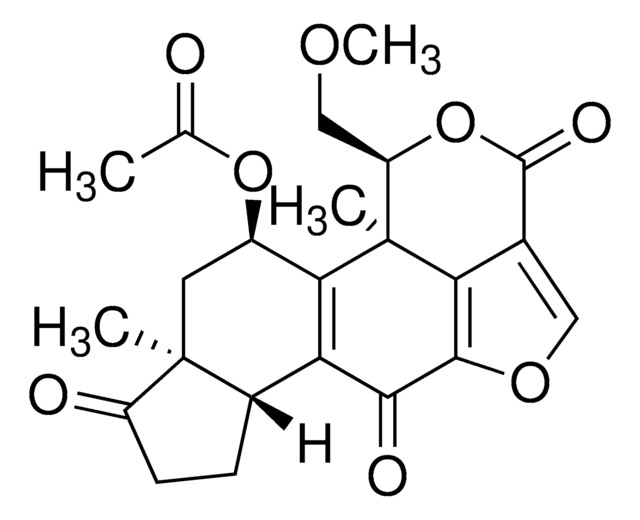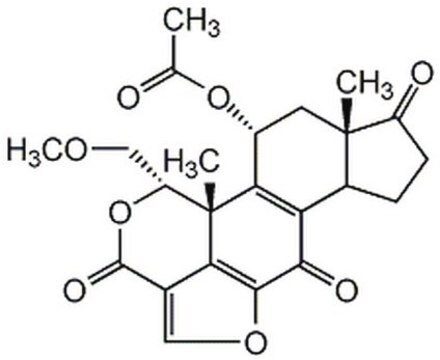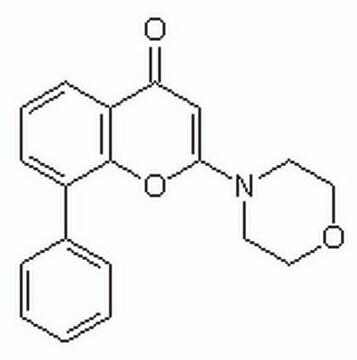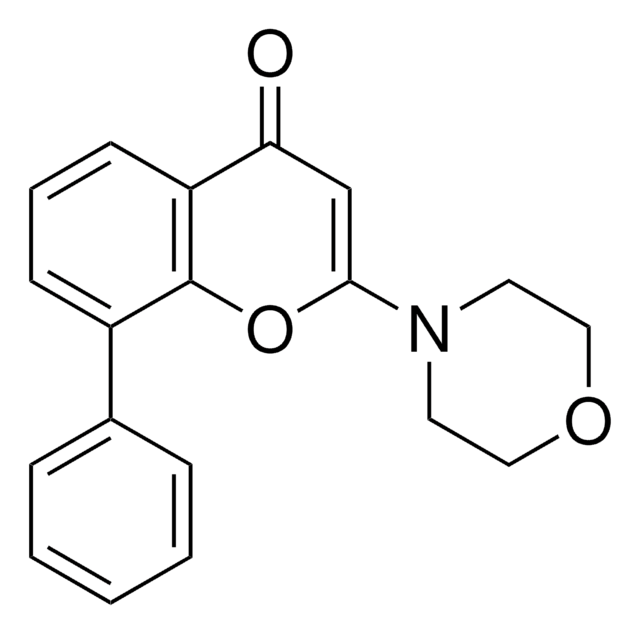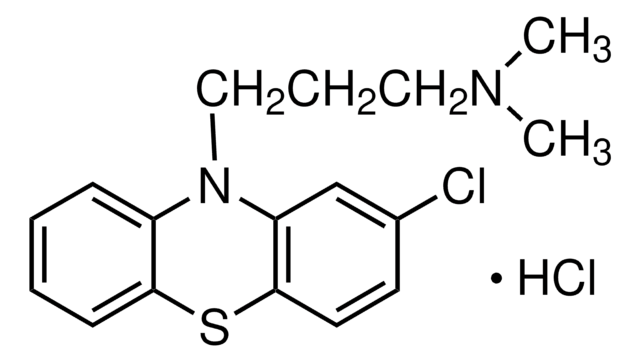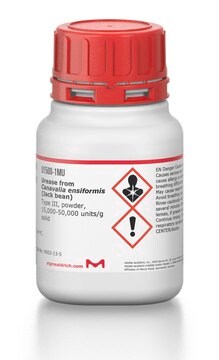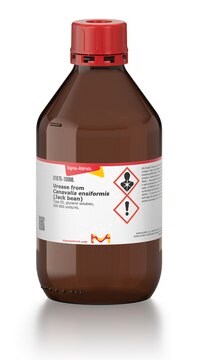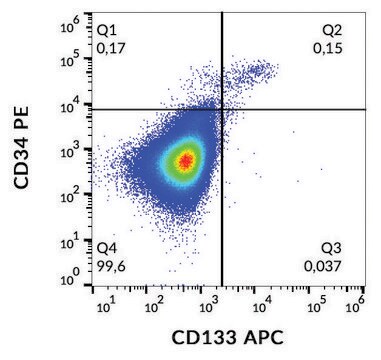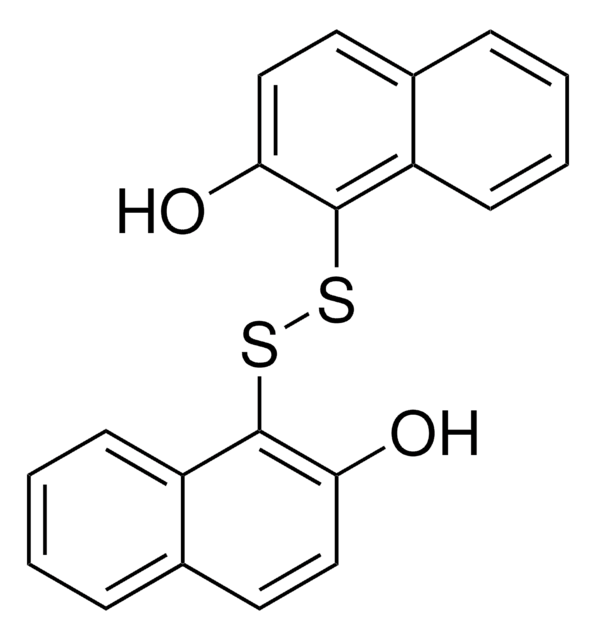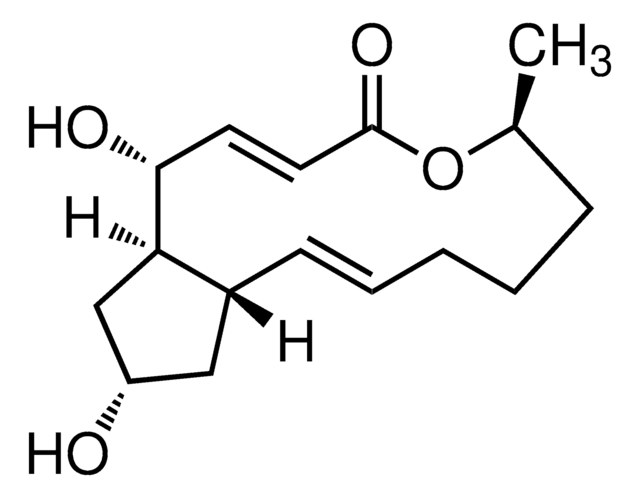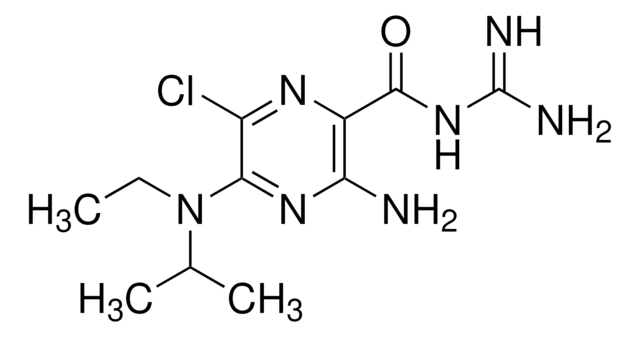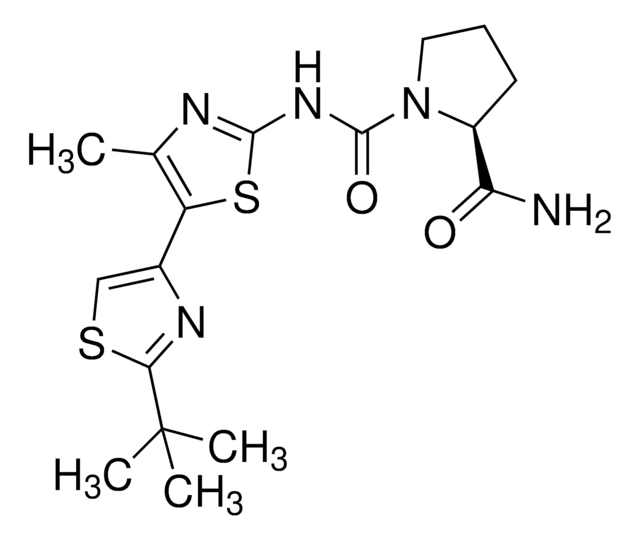Kluczowe dokumenty
W1628
Wortmannin
from Penicillium funiculosum, ≥98% (HPLC and TLC)
Synonim(y):
KY 12420
About This Item
Polecane produkty
pochodzenie biologiczne
Penicillium funiculosum
Poziom jakości
Próba
≥98% (HPLC and TLC)
Formularz
powder
kolor
off-white
rozpuszczalność
DMSO: soluble
H2O: unstable
temp. przechowywania
2-8°C
ciąg SMILES
[H][C@@]12CCC(=O)[C@@]1(C)C[C@@H](OC(C)=O)C3=C2C(=O)c4occ5C(=O)O[C@H](COC)[C@@]3(C)c45
InChI
1S/C23H24O8/c1-10(24)30-13-7-22(2)12(5-6-14(22)25)16-18(13)23(3)15(9-28-4)31-21(27)11-8-29-20(17(11)23)19(16)26/h8,12-13,15H,5-7,9H2,1-4H3/t12-,13+,15+,22-,23-/m0/s1
Klucz InChI
QDLHCMPXEPAAMD-QAIWCSMKSA-N
informacje o genach
human ... PIK3CD(5293) , PIK3CG(5294) , PIK3R1(5295)
Szukasz podobnych produktów? Odwiedź Przewodnik dotyczący porównywania produktów
Działania biochem./fizjol.
Cechy i korzyści
produkt powiązany
Hasło ostrzegawcze
Danger
Zwroty wskazujące rodzaj zagrożenia
Zwroty wskazujące środki ostrożności
Klasyfikacja zagrożeń
Acute Tox. 1 Inhalation - Acute Tox. 1 Oral - Acute Tox. 2 Dermal
Kod klasy składowania
6.1A - Combustible acute toxic Cat. 1 and 2 / very toxic hazardous materials
Klasa zagrożenia wodnego (WGK)
WGK 3
Temperatura zapłonu (°F)
Not applicable
Temperatura zapłonu (°C)
Not applicable
Środki ochrony indywidualnej
Eyeshields, Faceshields, Gloves, type P3 (EN 143) respirator cartridges
Wybierz jedną z najnowszych wersji:
Masz już ten produkt?
Dokumenty związane z niedawno zakupionymi produktami zostały zamieszczone w Bibliotece dokumentów.
Klienci oglądali również te produkty
Produkty
We present an article about how proliferating cells require the biosynthesis of structural components for biomass production and for genomic replication.
Nasz zespół naukowców ma doświadczenie we wszystkich obszarach badań, w tym w naukach przyrodniczych, materiałoznawstwie, syntezie chemicznej, chromatografii, analityce i wielu innych dziedzinach.
Skontaktuj się z zespołem ds. pomocy technicznej